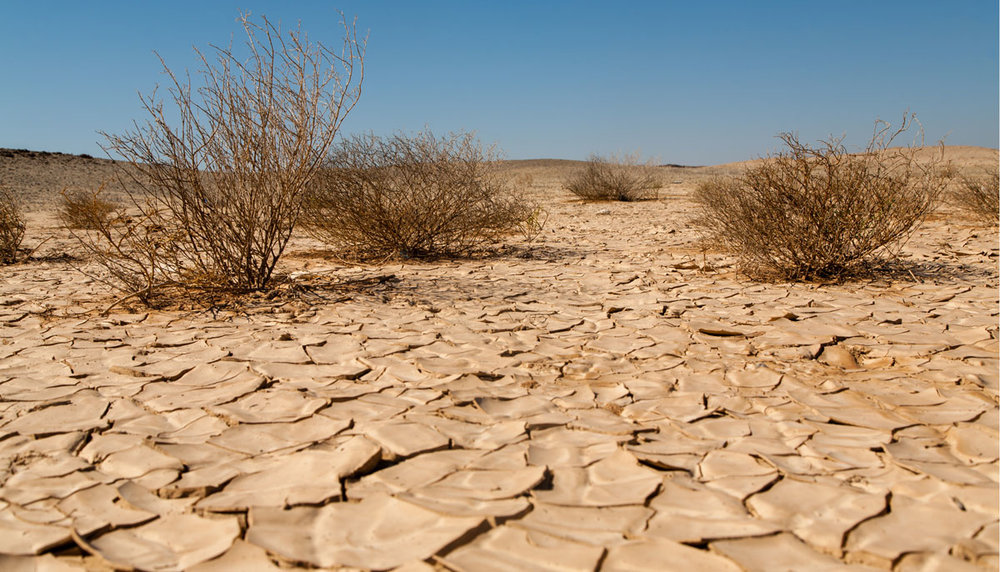Climate change rises wind erosion by 30% in Iran: official

TEHRAN — Climate change, coupled with lower precipitations and wetlands’ dryness have brought about 30-percent rise in wind erosion in the country, director general of the deserts office at the Forests, Range and Watershed Management Organization has said.
Wind erosion is a serious environmental problem attracting the attention of many across the globe. It is a common phenomenon occurring mostly in flat, bare areas; dry, sandy soils; or anywhere the soil is loose, dry, and finely granulated.
According to the U.S. National Soil Erosion Research Laboratory wind erosion damages land and natural vegetation by removing soil from one place and depositing it in another. It causes soil loss, dryness and deterioration of soil structure, nutrient and productivity losses and air pollution. Suspended dust and dirt is inevitably deposited over everything. It blows on and inside homes, covers roads and highways, and smothers crops. Sediment transport and deposition are significant factors in the geological changes which occur on the land around us and over long periods of time are important in the soil formation process.
Based on the figures 21 million hectares of the country’s land area is affected by wind erosion of which 7 million hectares were severely hit by the phenomenon which is believed to increase, Farhad Sardari said, adding that, wind erosion would lead to hefty environmental and economic loss.
Wind erosion studies are conducted every five years and the data are being updated since last year, IRNA news agency quoted Sardari as saying on Friday.
Climate changes, lower precipitation rates, drought spells, lower vegetation cover, urban development and agricultural practices can speed desertification, he regretted.
According to the French Scientific Committee on Desertification wind erosion is one of the most traumatic aspects of the desertification process. It leads to severe degradation of the environment, impoverishing soil as vast quantities of particles are carried away by the wind.
Wind erosion is the chief physical factor in the exhaustion of agricultural land. The sand encroachment it produces is also a major cause of concern to urban areas and oases in arid ecosystems, reducing human populations to poverty and migration as they are driven to abandon their sterile land and move either to new territories or into towns.
Sardari also said that in order to fight against desertification [and hence wind erosion] controlling overgrazing, identifying sites prone to desertification and wind erosion, and managing desert parks are set on agenda.
Reforestation plans, mulching, and setting up wind barriers [to control wind erosion by reducing the travel distance of wind across a field] are of the plans to control wind erosion and desertification, he added.
According to the figures Iran’s natural resources are stretching over 134 million hectares constituting 82 percent of the country’s total land area. Of the total number 14 million hectares are forests, 32 million hectares are deserts and 82 million hectares are pastures and plains.
Preventive actions against desertification
Green Facts explains that integrating land and water management to protect soils from erosion, salinization, and other forms of degradation, protecting the vegetative cover, which can be a major instrument for soil conservation against wind and water erosion, and integrating the use of land for grazing and farming where conditions are favorable, allowing for a more efficient cycling of nutrients within the agricultural systems are some of the measures helping in fight against desertification.
Furthermore, giving local communities the capacity to prevent desertification and to manage dry land resources effectively, turning to alternative livelihoods that do not depend on traditional land uses, such as dry land aquaculture, greenhouse agriculture and tourism-related activities, which are less demanding on local land and natural resources, and yet provides sustainable income, and creating economic opportunities in dry land urban centers and in areas outside of dry lands can also play a major role in reducing desertification.
MQ/MG
Leave a Comment